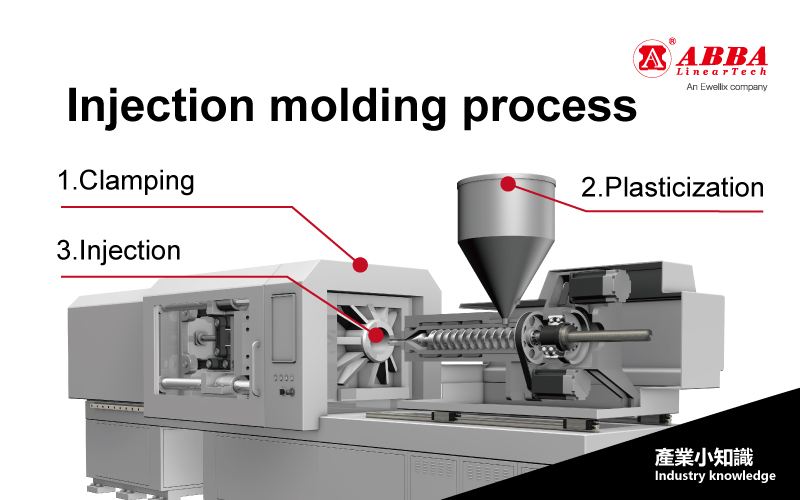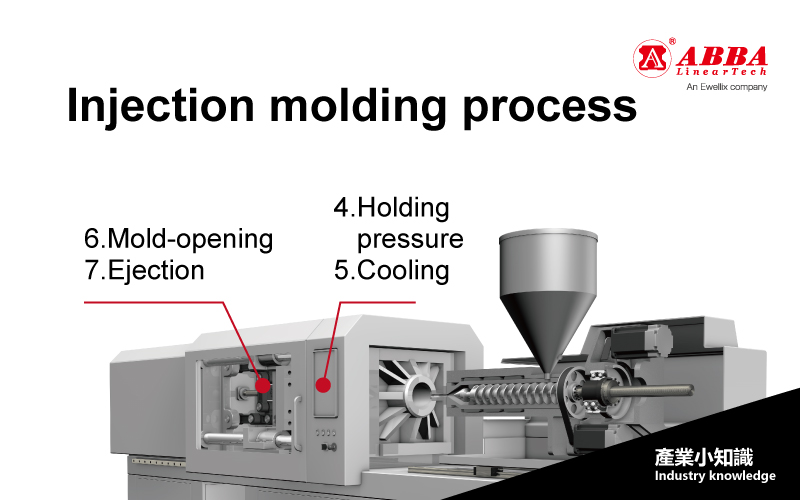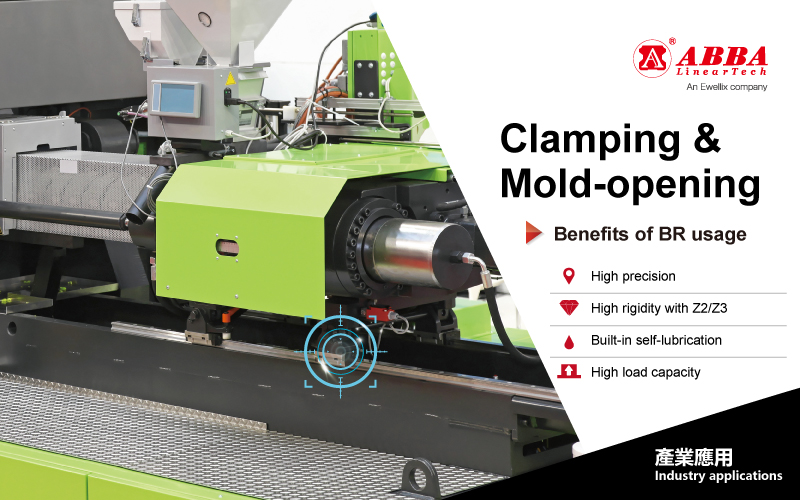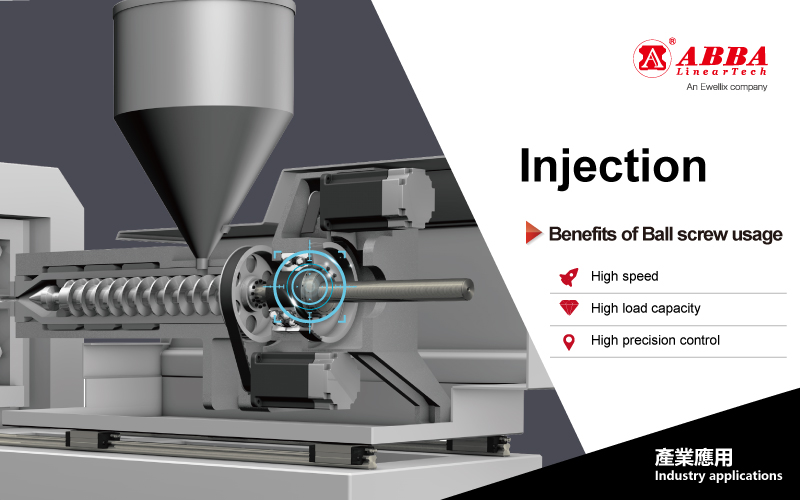ABBA LINEAR TECH CO., LTD.
ABBA Linear motion components, Optimized injection molding process
Plastic products have become an indispensable part of our daily lives. From automotive parts, medical equipment, electronic products, to even infant toys, almost every field relies on the application of plastics. Injection molding is the process of forming parts composed of thermoplastic or thermosetting plastic. Unlike 3D printing for small-scale customized production, Injection molding offers the following benefits:
① Suitable for repetitive and large-scale mass production of products
② Achieves cost and time efficiency
③ Produced by injecting single-layer material, it can form smooth surfaces, reducing occurrences of cracks, uneven wall thickness, and other issues.
From this, it is evident that Injection molding equipment plays a crucial role in the plastic molding industry. The use of ABBA ball screws within the equipment ensures efficient driving and pushing, while the high precision and rigidity of BR linear guides assist in the movement of fixtures and injection units, significantly enhancing production efficiency.
Main process of Injection molding
Injection molding is a process for forming components from thermoplastic or thermosetting plastic. It involves a cycle of clamping, plasticizing, injecting, holding pressure, cooling, opening the mold, and ejecting to complete one cycle.

① Clamping : This step involves closing the injection mold, maintaining closure under high pressure through the clamping device to ensure the proper molding of plastic parts.
② Plasticization : By operating the ball screw, the raw material is melted in the barrel.
③ Injection : Once the mold is closed, the plastic (usually in the form of pellets or granules) is heated in the machine's injection unit until it reaches a molten state. Then, the molten plastic is injected into the enclosed mold cavity under high pressure, filling the cavity and taking the shape of the mold.

④ Holding pressure : After the molten plastic fills the mold, pressure continues to be applied to the space inside the mold, allowing the plastic to remain in the mold cavity for a specific period. This ensures that the entire cavity is filled and the plastic is evenly distributed, preventing material backflow and producing uniform and high-quality products.
⑤ Cooling : After the plastic is injected and fills the mold cavity, the product is allowed to cool and solidify inside the mold. Cooling is a crucial step as it determines the final properties of the plastic part, including strength and dimensional stability.
⑥ Mold-opening : Once the plastic part has cooled and solidified, the mold is opened by using the clamping device.
⑦ Ejection : In the final step of the process, the solidified plastic part is ejected from the mold cavity by ejector pins.
4 major benefits of ABBA BR linear guides in clamping/opening mold applications :

▸ High precision
The high precision benefit of BR linear guides ensures the stability and accuracy of molds during the injection molding process, thereby enhancing the quality and consistency of the final products.
▸High rigidity with Z2/Z3 preload
The high rigidity design allows the linear guides to withstand larger workloads, aiding in reducing vibrations and deformations. This improves the processing accuracy and stability of injection molding machines while lowering product rejection rates.
▸Built-in self lubrication
The standard type of BR linear guides come equipped with a self-lubricating system, enabling continuous lubrication during motion, thereby reducing friction and wear.
▸High load capacity
The BR linear guides feature a four-row ball design with a 45-degree contact angle, achieving equal load distribution in all four directions. Therefore, they possess outstanding high-load capacity, capable of withstanding heavy pressure from various directions, thereby reducing mold deformation and wear.
3 major benefits of ABBA Ball screw in injection applications :

▸ High speed
Its high-speed motion characteristics enable the increase of injection speed, thus reducing production cycles and enhancing production efficiency.
▸High load capacity
The design structure is robust, capable of withstanding high injection pressure and loads, ensuring stable operation of the injection unit under high pressure and preventing deformation or damage caused by excessive loads.
▸High precision control
Higher precision and stability enable precise control of the speed and position during the injection process, ensuring accurate plastic injection into the mold and consistent product size and quality.
ABBA BR linear guides and ball screws demonstrate outstanding performance and benefits in the field of injection molding. BR linear guides excel in clamping/opening mold applications with their four major benefits of high precision, high rigidity, built-in self-lubrication system, and high load capacity, providing stable and reliable support for injection molding processes. On the other hand, ABBA ball screws stand out in the injection application with their three major advantages of high speed, high load capacity, and high precision control.
According to a market research report by the Japanese Global Information, Inc, the market size of Injection molding machines is predicted to grow to $4.07189 billion by 2027, with a compound annual growth rate of 3.5% during the forecast period. This data indicates the continued growth and expansion of the injection molding industry. ABBA BR linear guides and ball screws will continue to optimize the Injection molding process, injecting new momentum into the development of the injection molding industry.
▸Watch the video for a quick understanding of the Injection molding process and the benefits of ABBA's applications.